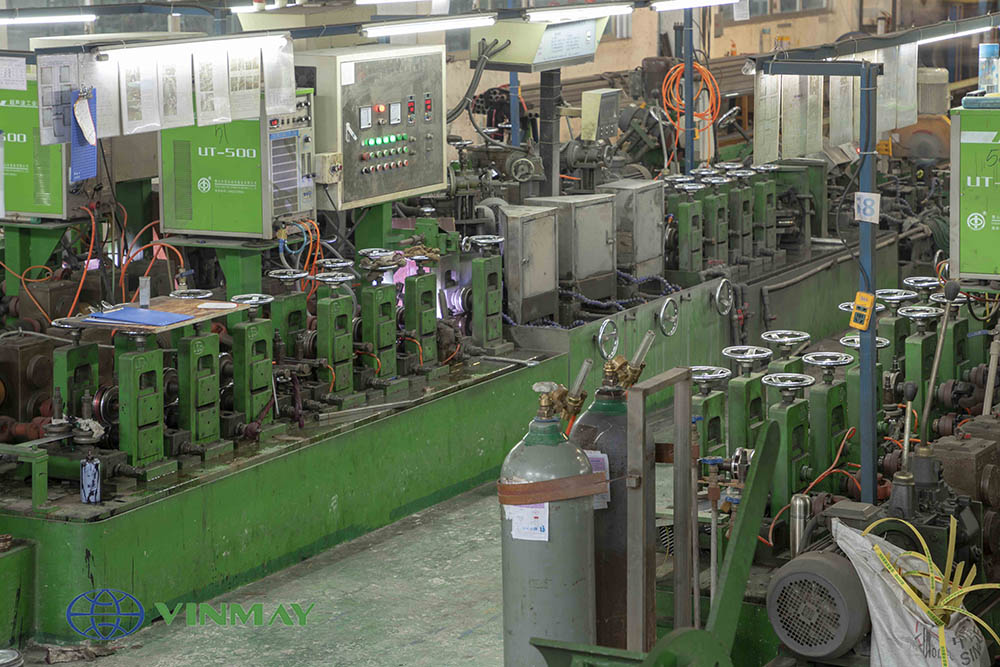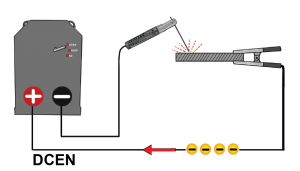How to TIG Weld Stainless Steel Pipe ?
TIG welding stands as a pinnacle of welding craftsmanship, and when it comes to
stainless steel pipes, the art elevates even further. The advantages of TIG welding stainless steel pipes are unparalleled - clean, precise, and strong welds that retain the stainless steel's corrosion-resistant properties.
Introduction
How to TIG weld stainless steel pipes requires both skill and knowledge. In this comprehensive guide, we delve into the all processes of TIG welding on this elegant metal.
This article unveils the complexities of TIG welding stainless steel pipes. We'll explore the inherent challenges in this process, the essential TIG setup for stainless steel welding, the critical step of pre-cleaning stainless steel, and the hands-on techniques to master the art. Finally, we'll present five indispensable tips to weld stainless steel pipes flawlessly.
Throughout this guide, you will gain a holistic understanding of TIG welding stainless steel pipes. We address the challenges, walk you through the setup from gas to machine, and empower you to translate theory into high-quality TIG welds on this remarkable metal.

Challenging of TIG Weld Stainless Steel Pipe
Stainless steel is an iron, carbon, nickel, and chromium alloy. So, unlike mild steel (an alloy of iron and carbon), stainless steel doesn’t corrode thanks to the chromium content. Stainless steel's unique properties contribute to its welding challenges. Its composition can create specific welding ability issues that demand attention.
For instance, stainless steel's low thermal conductivity requires precise control of heat input during welding. Additionally, the risk of carbide precipitation due to overheating can compromise the material's corrosion resistance.
Heat treatment plays a crucial role in the quality of stainless steel welds. If stainless steel is heated excessively, it undergoes a carbide precipitation process, leading to a loss of corrosion resistance. Thus, meticulous heat management is essential to maintain the material's integrity.
Reading stainless steel welds is a skill that every TIG welder should develop. Recognizing signs of carbide precipitation, such as discoloration or rough welds, can help prevent compromising the corrosion-resistant nature of stainless steel welds.
TIG Setup For Stainless Steel Welding
Achieving impeccable TIG welds on stainless steel pipes begins with the right setup:
Shielding Gas
The choice of shielding gas significantly affects weld quality. In stainless steel welding, a mix of argon and helium is often preferred for optimal results. This combination enhances arc stability and reduces the risk of contamination.
Polarity
Proper polarity selection is essential for successful TIG welding.
Direct Current Electrode Negative (DCEN) is commonly used for stainless steel welding, as it offers better control and penetration.

Tungsten Electrode
Selecting the right tungsten electrode and its diameter is vital. Thoriated or ceriated tungsten electrodes are often chosen for stainless steel due to their durability and ability to maintain a stable arc.
Tungsten Tip Preparation
Properly preparing the tungsten electrode's tip shape and size is crucial for consistent arc ignition and stability
Filler Metal
Matching the filler metal composition to the base stainless steel prevents the creation of brittle welds and ensures joint integrity. Using a low-carbon filler metal is recommended to maintain corrosion resistance.
Amperage Output
Due to its effective heat retention, stainless steel demands a heat input approximately 10-20% less than that needed for mild steel. The general guideline for mild steel suggests that 1 amp of power can weld around .001” of steel thickness. As a result, a 200A current is suitable for welding between 3/16” and 1/4".
However, it's worth noting that these principles tend to underestimate the capabilities of most welding machines; nonetheless, they serve as a valuable initial reference. When working with your stainless steel joint thickness, convert it to amps and subsequently reduce the amperage output by approximately 10-20%. Achieving optimal results may require some experimentation, taking into account factors such as travel speed, technique, and machine capabilities.
Pre-cleaning Stainless Steel
Proper pre-cleaning removes contaminants that could compromise the weld's quality. Before welding, stainless steel surfaces should be thoroughly cleaned using solvents and brushes specifically designed for stainless steel preparation. This step ensures a clean surface free from oils, dirt, and oxides that could hinder weld quality.
Techniques for How to TIG Weld Stainless Steel Pipe
Mastering the art of TIG welding stainless steel pipes involves employing various techniques to ensure pristine welds:
Gas Purging
When engaging in the welding of stainless steel pipes and aiming for impeccable weld quality within the tube's interior, the process of purging becomes essential.
In the majority of instances involving the welding of stainless pipes, the act of purging is a requisite step. Moreover, it frequently becomes imperative to extend this purging practice to the rear side of the joint when welding two stainless steel plates in a side-by-side configuration with a butt weld setup.
The distinction in the resulting stainless weld appearance within the tube becomes apparent based on whether proper purging was conducted or not.
Failure to execute proper purging exposes the weld to internal oxygen, leading to a weakening of the weld's integrity. While the welded joint benefits from argon shielding gas channeled through the TIG torch cup, the lower section of the weld joint remains susceptible to the oxygen residing within the pipe.

Copper/Aluminum Backing
Employing copper or aluminum backing plates can act as effective heat sinks, dissipating excess heat and minimizing distortion.
Pre and Post Shielding Gas Flow
Maintaining a consistent flow of shielding gas before, during, and after welding prevents oxidation and contamination of the weld zone.
Heat Management
Precise control of heat input is essential to prevent overheating and subsequent carbide precipitation. Proper heat management ensures a strong, corrosion-resistant weld.
Foot Pedal Control
Utilizing a foot pedal control allows real-time adjustments of welding current, enabling welders to maintain a consistent and controlled arc.
Pulse TIG
Pulse TIG welding reduces heat input, making it particularly useful for thin stainless steel pipes. This technique improves control over the weld pool and minimizes the risk of overheating.
Puddle Size and Travel Speed
Managing the size of the weld puddle and maintaining a consistent travel speed contribute to even bead appearance and penetration. A steady, controlled motion ensures a uniform weld.
5 Essential Tips for How to Tig Welding Stainless Steel Pipe
As you embark on your journey to master TIG welding on stainless steel pipes, keep these five important tips in mind

1.Select Low-Carbon Filler Metal
Opt for a low-carbon filler metal to maintain joint strength and corrosion resistance while preventing carbide precipitation.
2.Practice Proper Heat Management
Monitoring and controlling heat input during welding prevents overheating and maintains stainless steel's desirable properties.
3.Prioritize Cleanliness
Thoroughly clean and prepare stainless steel surfaces before welding to eliminate contaminants that could compromise the weld's integrity.
4.Invest in Quality Equipment
Quality TIG welding equipment, including a well-maintained TIG torch, suitable tungsten electrodes, and a reliable power source, is essential for successful stainless steel welding.
5.Continuous Learning and Practice
Conclusion
TIG welding stainless steel pipes is a nuanced art that demands a thorough understanding of the metal's properties, precise technique execution, and diligent equipment management.
By embracing the challenges, mastering the setup, employing the right techniques, and adhering to essential tips, you'll forge impeccable stainless steel welds that stand as a testament to your welding mastery. With every weld you make, you not only join metal but also shape a legacy of skill and craftsmanship that withstands the test of time.
Foshan Vinmay Stainless Steel Co.,ltd specialized in producing stainless steel tig welded pipe. All of pipe are fully welded without pittings, sandhold. It's more easy to be bent. For more information about how to tig weld stainles steel pipe, please
contact us. 



